The Pyramid of Garvagh
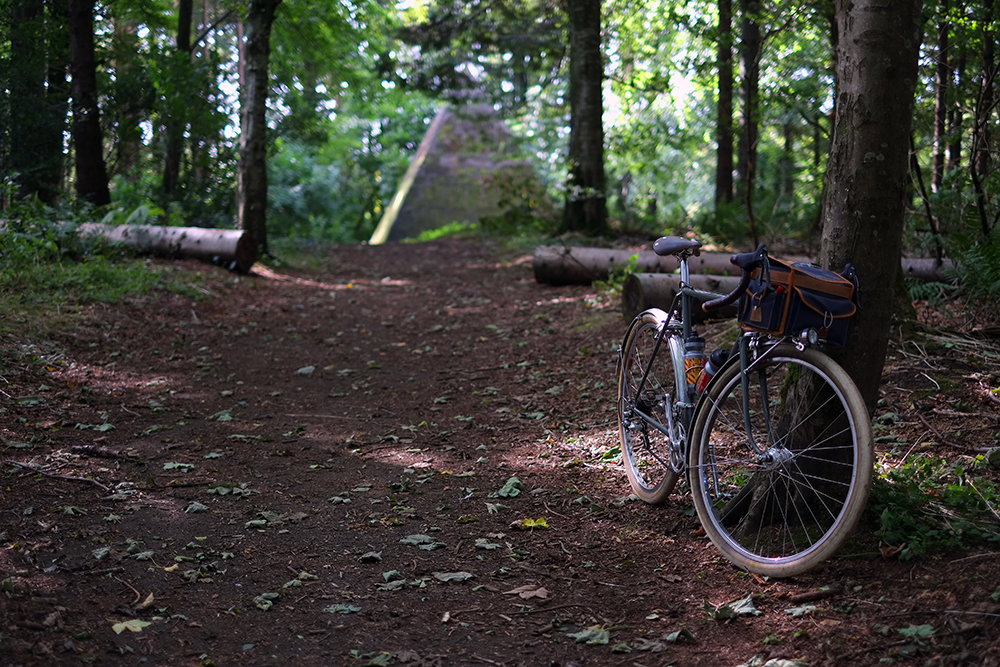
One of my favourite destinations for day rides is the village of Garvagh. Located just over the hill to the south, it makes for a convenient midway point of a metric century ride with some breathtaking views. The first half of the trip involves some sustained climbing, but the lovely descent with panoramic layered mountain vistas more than makes up for it. The village of Garvagh itself is tiny, but interesting. It began as a large private plantation in the 1600's, settled by the Canning family. Gradually it developed a market-town center - essentially one street, which today is lined with shops and cafes housed in attractive old stone buildings. There is also a museum and a handsome clock tower. The original plantation manor has been knocked down to make way for a school some decades ago, and most of the land has been parceled out and developed. A portion, however, has been preserved as public parkland.

The Garvagh Forest covers 550 acres and offers 7 miles of walking/ cycling trails. Many of these are rough, tight and winding, with sharply pitched flicks, making the forest a popular destination for mountain bikers. And although some of the trails are too technical for me, every time I pass through Garvagh I will usually at least do the easy outer loop through the woods on my roadbike, fat tires or not, enjoying any chance to get some unpaved riding in.
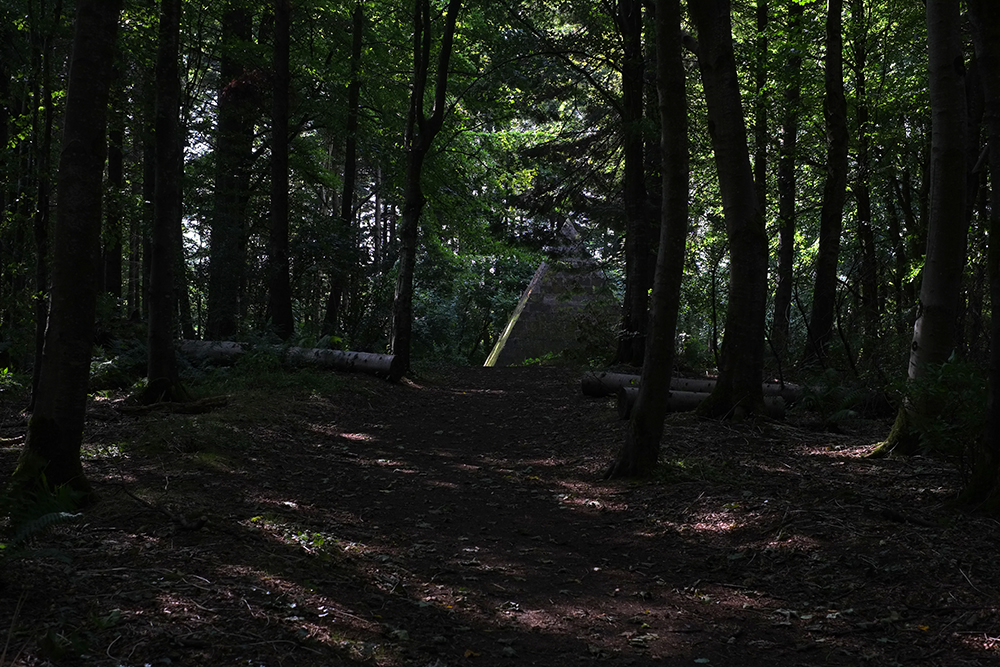
It was in doing this for the first time that I "discovered" it - almost literally stumbling upon it, as I

In a clearing atop of a thickly wooded hill, there it stood: a pyramid. Modestly sized and lacking any extravagance of appearance, it was almost inconspicuous in its surroundings. Excepting, of course, for the fact that it was a pyramid. In the middle of an Irish forest!
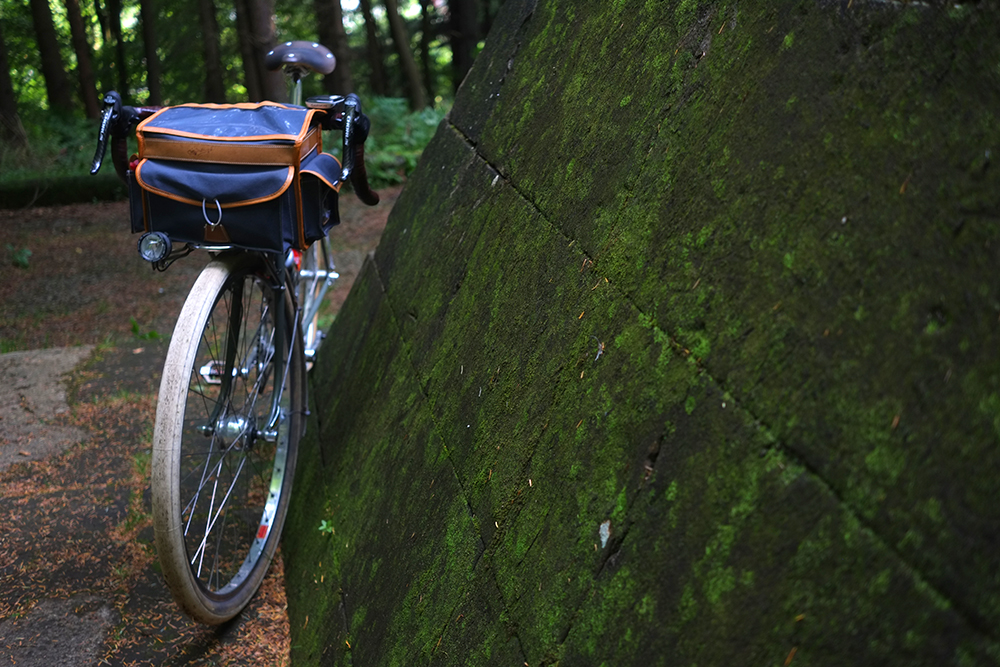
Overgrown by moss and unaccompanied by any sort of plaque offering an explanation of its existence, the pyramid looked oddly native to its environment. It was also invitingly tactile, compelling me to circle it and run my hands along the green-gray mossy brickwork to assure myself of its realness.
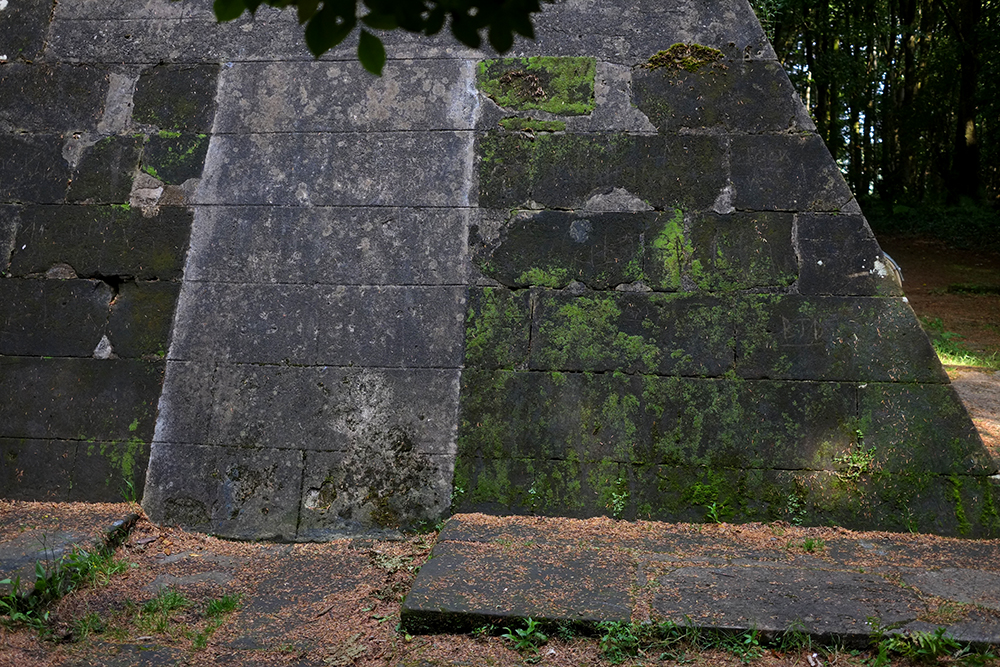
Other than the sealed doorway at the back, and the writing (usually initials) scratched into the moss, no features broke up the structure's uniformity. It was a pyramid, plain and simple: a square base and 4 triangular walls converging at a point.

I do not know why it had such a tremendous effect on me. But I found the structure's incongruous presence more than merely intriguing. There was a mystical feel to it, a magnetism - its forest setting and mossy brickwork infused with a meaning that felt just beyond my grasp.
When at length I managed to tear myself away, I raced home eager to learn all about the pyramid. Information, however, was sparse. Far from being promoted as a local feature, its existence was kept rather low key - so that even most of the locals I'd mention it to had no idea there was such a thing on their doorstep. "A pyramid? In a forest? What are you on about!"
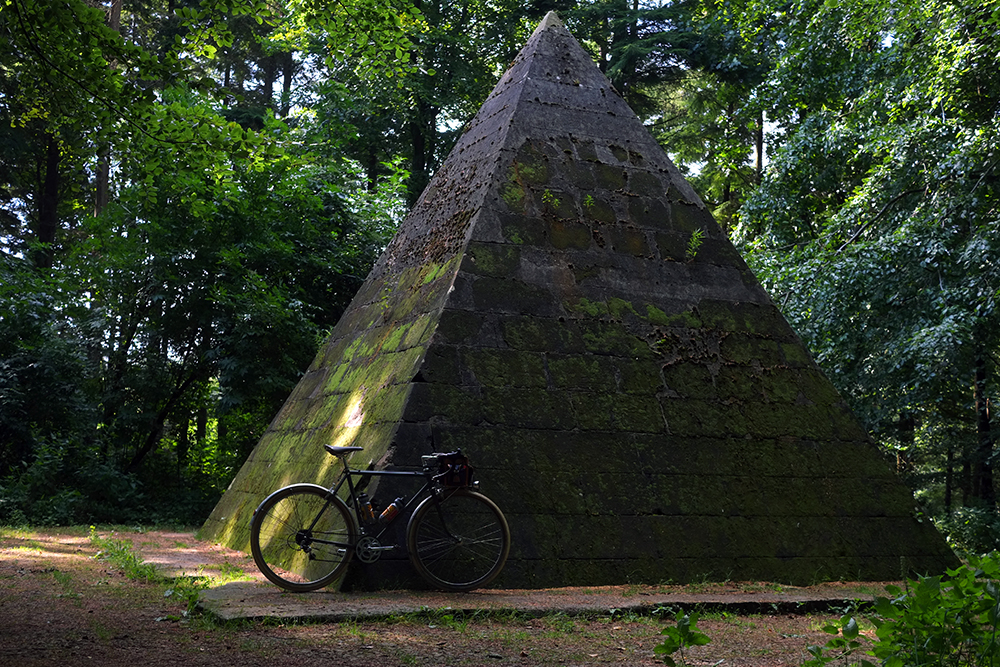
The truth about its origin was rather a let-down. Some time in the 19th century, the then-Lord Garvagh (Baron Leopold Canning, most likely) set off on a Grand Tour of Egypt. So inspired was he by the pyramids there that, upon returning home, he - naturally - commissioned his own. Built of freestone blocks 18 square feet at the base and 21 feet high, I am not sure how the proportions and construction methods compare to its Egyptian models, but Lord Garvagh must have been happy enough. Originally he had intended for the pyramid to be his burial chamber. But as he reached old age, it seems the idea ceased to appealed to him, and he was buried instead in a more conventional manner. Its doorway eventually sealed, the pyramid languished on the Canning property - the structure surviving, it seems only though the sheer luck of the land it stands on ending up as part of preserved public land and not the bit sold off for private development.
There are those who propose a connection between ancient Egypt and Ireland, suggesting links between the two civillisations. Unfortunately the Pyramid of Garvagh is not one of them. Like many other unusual structures around the North Coast, it was built as a folly - an architectural toy - by a wealthy, somewhat eccentric landowner. Devoid of any special meaning or mysticism, it nonetheless has the power to surprise. Delighting walkers and cyclists who happen upon it, it is particularly striking in May, when it sits upon a carpet of bluebells.

The thought that came into my head when reading the article was the pyramid had something to do with the Freemasons, as I believe the pyramid is a masonic symbol.
ReplyDeleteIt would be likely that Lord Garvagh was a bigwig in the local masonic lodge where he would meet with the local middle classes to scratch each others backs and give each other funny handshakes.
The Masons were much more involved with secrecy at one time. Probably much or all of that has been lost. Masons were also a close network of influential leaders, and still may be on some level. This pyramid is probably a folly. There are many huge ancient pyramids, however, all over the world - some under water or overgrown with foliage. No one can explain why similar architecture is all over the world from that time so it isn't researched or discussed. I've heard more than 68 known huge pyramids exists.
DeleteMust find out what's inside that chamber!
DeleteI am intrigued by the idea of underwater pyramids, but do not know of any that have been confirmed as non-hoaxes.
I've been inside it!
DeleteWhen I was wee it wasn't blocked off. Sorry to report that there's nothing inside it.
Except once when we went in there was a skeleton of a bird. Which added to the spookiness and mystery of it to our young minds.
Er. mebbe. If Lord Garvagh was Catholic, no freemasonry for him. Not that they wouldn't have him, but there was this Papal Bull, you see. It's still in force.
ReplyDeleteI called the pyramid for a folly, myself. A very cool one. Neat that you can find such things around, and as you say, cool that it ended up in the public part of the land division.
The Cannings weren't Catholics. They were granted their land in the plantation of Ulster and fought for King William in the Jacobite wars. The baronetcy was created in the early 1800s so they weren't part of the older Irish aristocracy and subsequent barons ended up as English establishment as it gets (so quite likely to be freemasons as well)
DeleteThis is one reason I frikken LOVE Lovely Bicycle, you can come to look at pictures of rusty commuter bike p**n and end up googling "Plantation of Ulster" and learning all sorts of interesting stuff. I read Bikesnob and only learn new bad words...
DeleteSpindizzy
Correct me if this not entirely accurate, but I do not think any Ulster landowners brought in during the Plantation period were Catholic. That was sort of the point of the plantation scheme.
DeleteThat said, in the area where I live Cannings tend to be Catholic. Must have happened over time through marriage.
Next you are in Garvagh try the Duck Pond Tea Room!
DeleteOh yes, I keep meaning to go.
DeleteSo this would be "The Pyramid of (a) Geezer"...?
ReplyDeleteSpindizzy
sorry.
You get my titles so well!
Delete"it was built as a folly - an architectural toy - by a wealthy, somewhat eccentric landowner. Devoid of any special meaning or mysticism, it nonetheless has the power to surprise."
ReplyDeleteFolly and surprise, what could be more meaningful and mystical?
At least in light of some of my custom bike commissions, perhaps we ought to consider this post as subtle ironic commentary on the preceding.
DeleteSorta begs the question - how much should a hand built pyramid cost?..
DeleteI'll ask the local pyramid builder for a quote!
DeleteThis structure has acquired its own mysticism over time - it is lovely and what a beautiful area it rests in - thanks again for the gorgeous photos and interesting stories.
ReplyDeletenever thought Id read about garvagh of all places on your blog!
ReplyDelete;;many thanks for the laughs, from a long time norn iron reader!
More surprising/obscure than Magilligan even? I wouldn't have thought!
DeleteI am glad to see you riding the bike you built with Mike. It is coming up on a year now, I think? A report would be most welcome.
ReplyDeleteDuly noted! (And yes, I ride this bike quite a lot and love it).
DeleteNot related to this post, which was fun to read, but... what is happening with your Brompton? Do you not ride it anymore? And why? I am considering a Brompton so would love to hear an update.
ReplyDeleteOh I ride it all the time. It's just not my weapon of choice for a 60+ mile ride with massive elevation gain! Have a look at my instagram feed for everyday Brompton pics. I use it mainly as a cargo bicycle, and for multimodal commutes. But yes, I think an update is in order as well.
DeleteI see the BBC Who Do You Think You Are program featuring the actor Mark Gatiss traced his ancestors back to the O'Kanes and O'Mullans around Garvagh and the surrounding area.
ReplyDelete